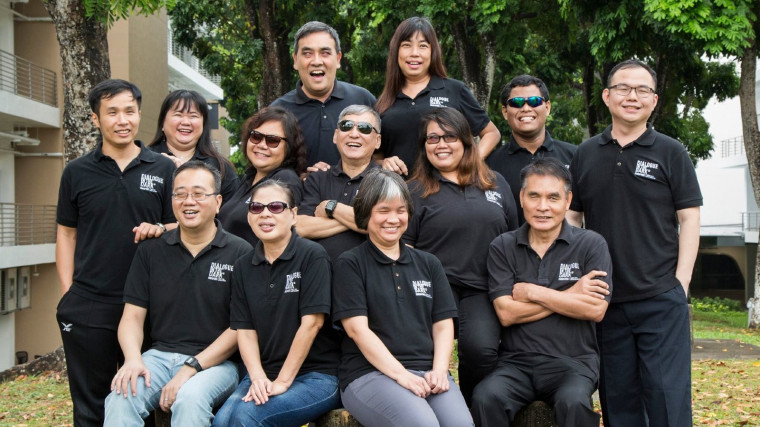|
Audio Version Available
|
I’m in a Zoom.
I know my camera is on, and my mic can be unmuted by hitting the spacebar.
One tiny problem: I’m blindfolded. I have no idea where everything is, and when I move I’m praying I don’t knock over the glass of water resting somewhere on my table.
I have a blindfold on because I’m in an online programme organised and facilitated by visually impaired people from Dialogue in the Dark SG.
Launched in December 2020, Spotlight on The Blind advocates for social inclusion by inviting participants to walk a mile in a blind person’s shoes – for example, to simulate how blind people navigate their surroundings, I listen to a video while blindfolded and guess what’s happening based on sound alone.
In every Zoom breakout room, a blind guide is accompanied by a sighted assistant who reads out questions and comments in the chat and checks when everyone has completed their instructions. Participants are encouraged to speak as the guides recognise us by our voices.
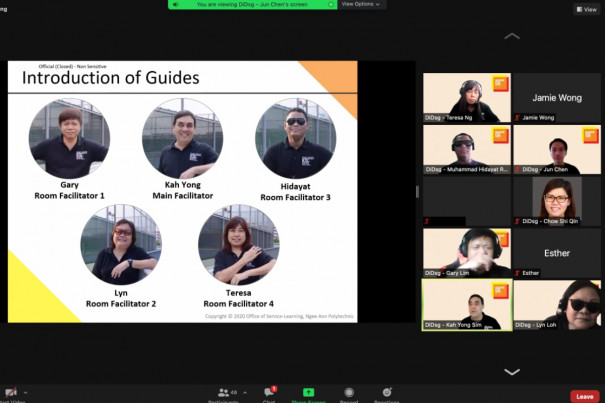
Looking at the blind guides on my screen smiling and talking on camera, I realised I wouldn’t have been able to tell if they were blind if I didn’t already know it – they were confident and independent, running the whole programme online from their own homes.
After the two-hour long session, I learnt more about the programme and the guides. Spotlight on the Blind can be run during the week at four time slots — 9am, 11am, 2pm, and 4pm — depending on demand and availability.
The blind guides are part-time staff employed by DiDSG, in charge of guiding visitors through its physical exhibition (currently closed due to the pandemic) at Ngee Ann Polytechnic’s campus. Now, they create the same experience online.
Pivoting online
But pulling it off was not easy.
Due to pandemic restrictions, DiDSG’s physical exhibition had to shut down temporarily as the experience was done in total darkness, where participants had to rely on tactile surfaces to navigate. This made a contact-free and socially distanced experience impossible.
“Having to put it on hold meant we couldn’t really pay our 15 guides as they’re paid by the hour,” says DiDSG’s full-time staff member, Prema, 57. Prema, with a team of four other full-timers — including three blind employees — work at Ngee Ann’s Office of Service Learning to support the blind guides and the exhibition on campus.
To overcome this, she tells The Pride, the team, with the help of other Ngee Ann staff, came up with a solution that was Covid-safe, blind-friendly and virtual, while preserving the immersive experience of the physical exhibition.
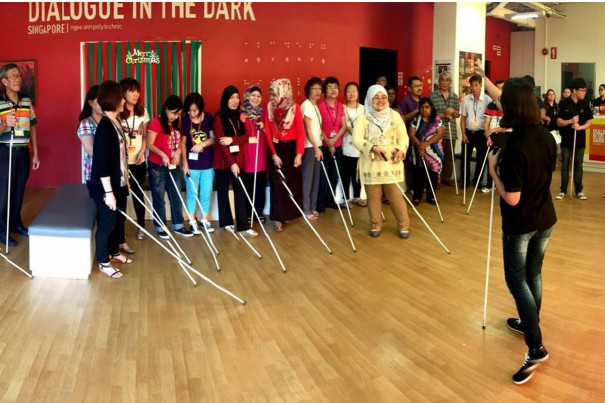
While Prema and other sighted staff worked out the logistics, the full-time blind staff were roped in to brainstorm for online activities and lessons for participants.
I’m someone who doesn’t enjoy paying to sit in front of my computer. Yet, DiDSG’s online programme was an enlightening experience. During the session, I began to sense the world around me in a different way.
When I removed my blindfold to watch the interactive video again, I saw a blind guide show how they would navigate their surroundings without blind-friendly features like auditory indicators or tactile surfaces. While the blind guide in the video demonstrated how they worked around such situations, it was not without obvious safety risks, for example in places with low headroom.
But aside from the challenges that blind people go through, I was pleasantly surprised to find out that the interactive video also featured Dialogue in the Dark’s blind guides swimming, playing goalball and cycling.
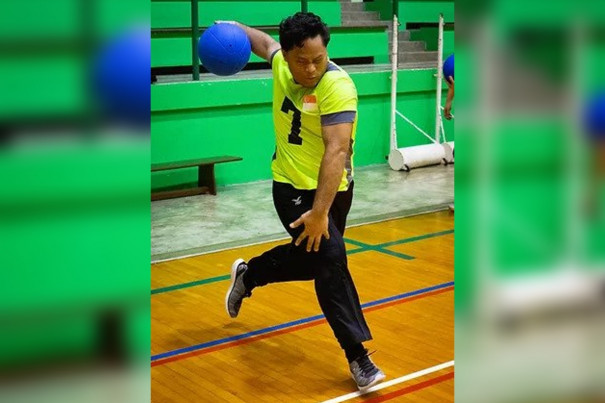
“When we were planning what to shoot for the interactive video, we added things we know our guides are good at and love doing,” says Sim Kah Yong, 57. Kah Yong is blind and heads the programme’s content team. As a full-timer, he personally taught the other blind guides to use Zoom.
Kah Yong has been working for 12 years at DiDSG, and was one of its founding members when the Singapore chapter was started in 2009. Prior to that, he spent 19 years as a social worker at the Singapore Association for the Visually Handicapped (SAVH).
“When blind people get a job, we stick to it because it’s almost a privilege for us to land a job. So we’re very loyal employees,” he says half-jokingly.
Before the pandemic hit, Kah Yong had heard of Zoom as a blind-friendly communication platform, but he never had a need to use it. It was only last year that he ventured into running online programmes via video conferencing, a first in his career.
Patience, perseverance and a lot of practice
Most of us have quickly adopted video conferencing as a means to communicate during the pandemic, but it presented Kah Yong and his fellow blind guides with a much steeper learning curve.
“Our guides don’t use the computer often, much less being familiar with Zoom,” he says.
Before Spotlight on the Blind, knowing how to use a computer wasn’t necessary for the guides. This meant Kah Yong had to teach them how to use a computer even before he could start teaching them about Zoom. Of course, this meant that he had to learn how to use Zoom himself first!
Other stories you might like
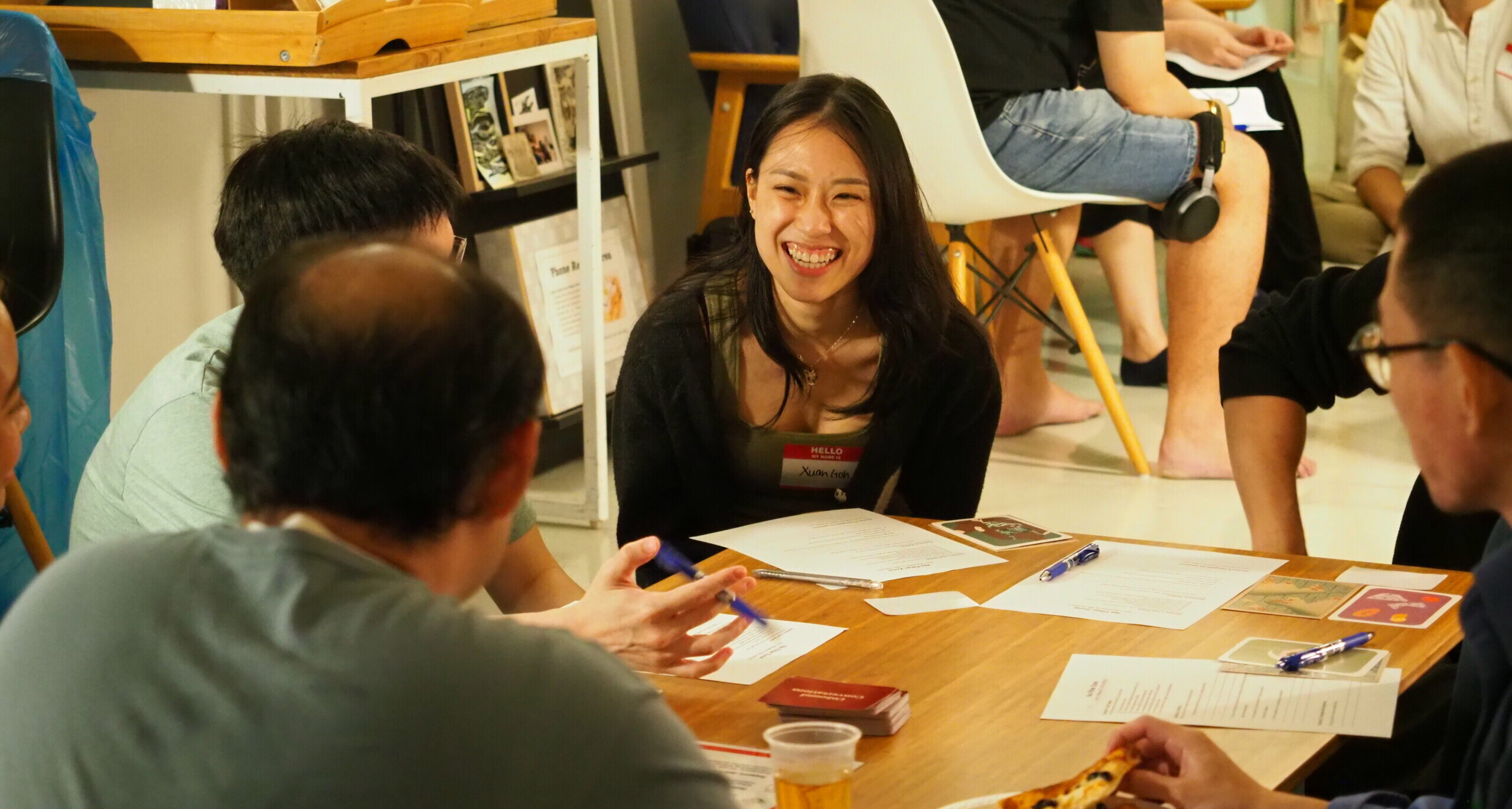
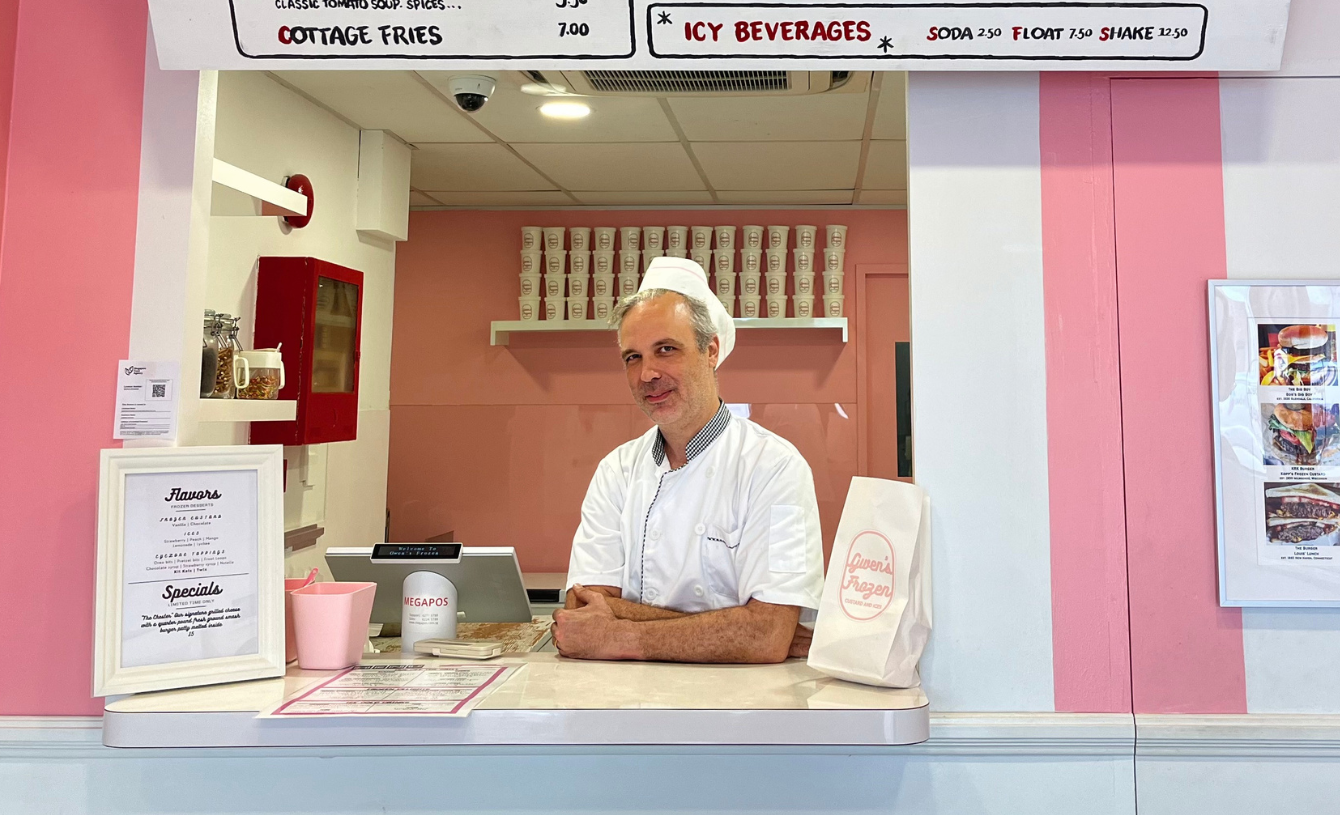
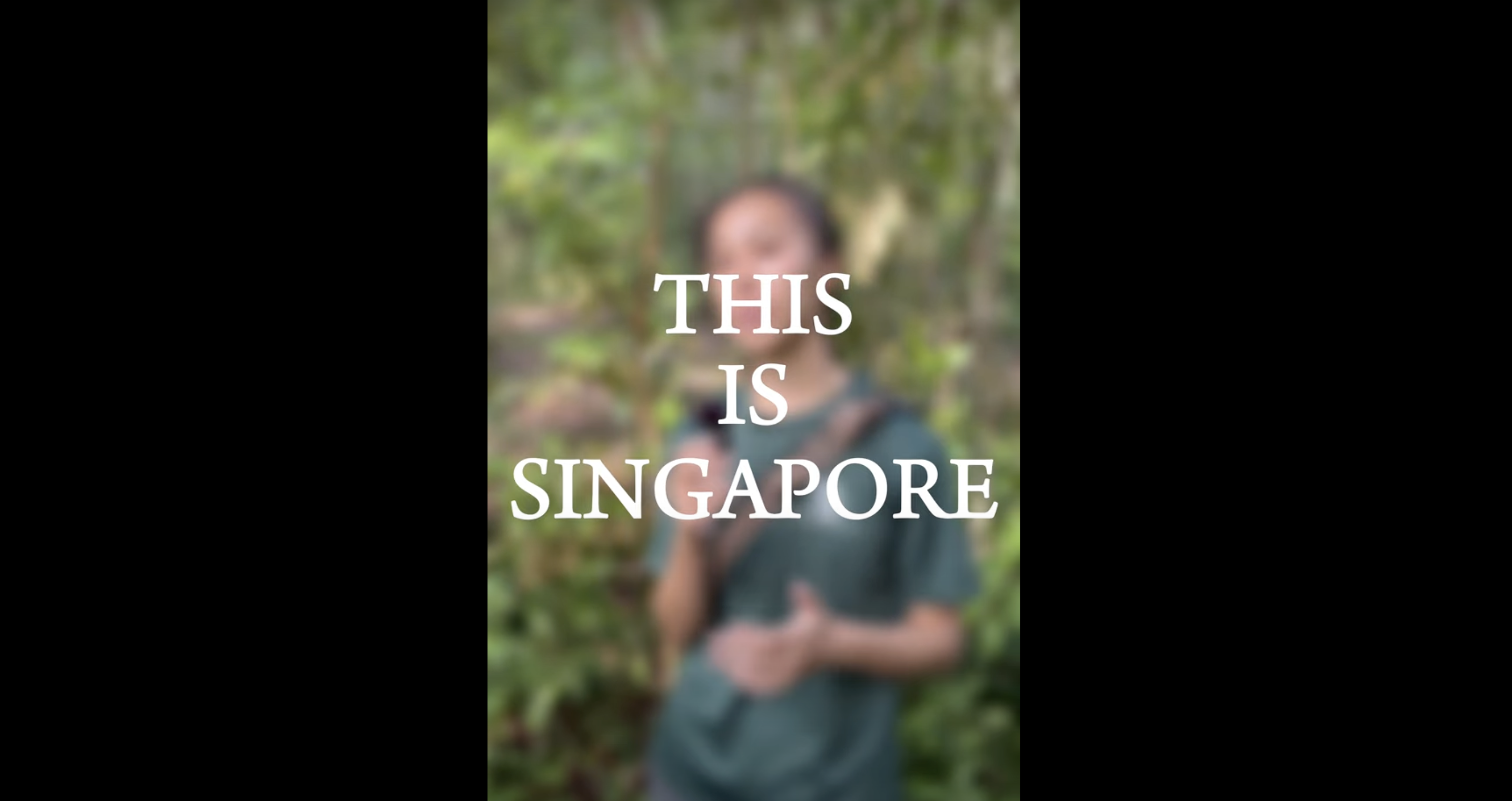
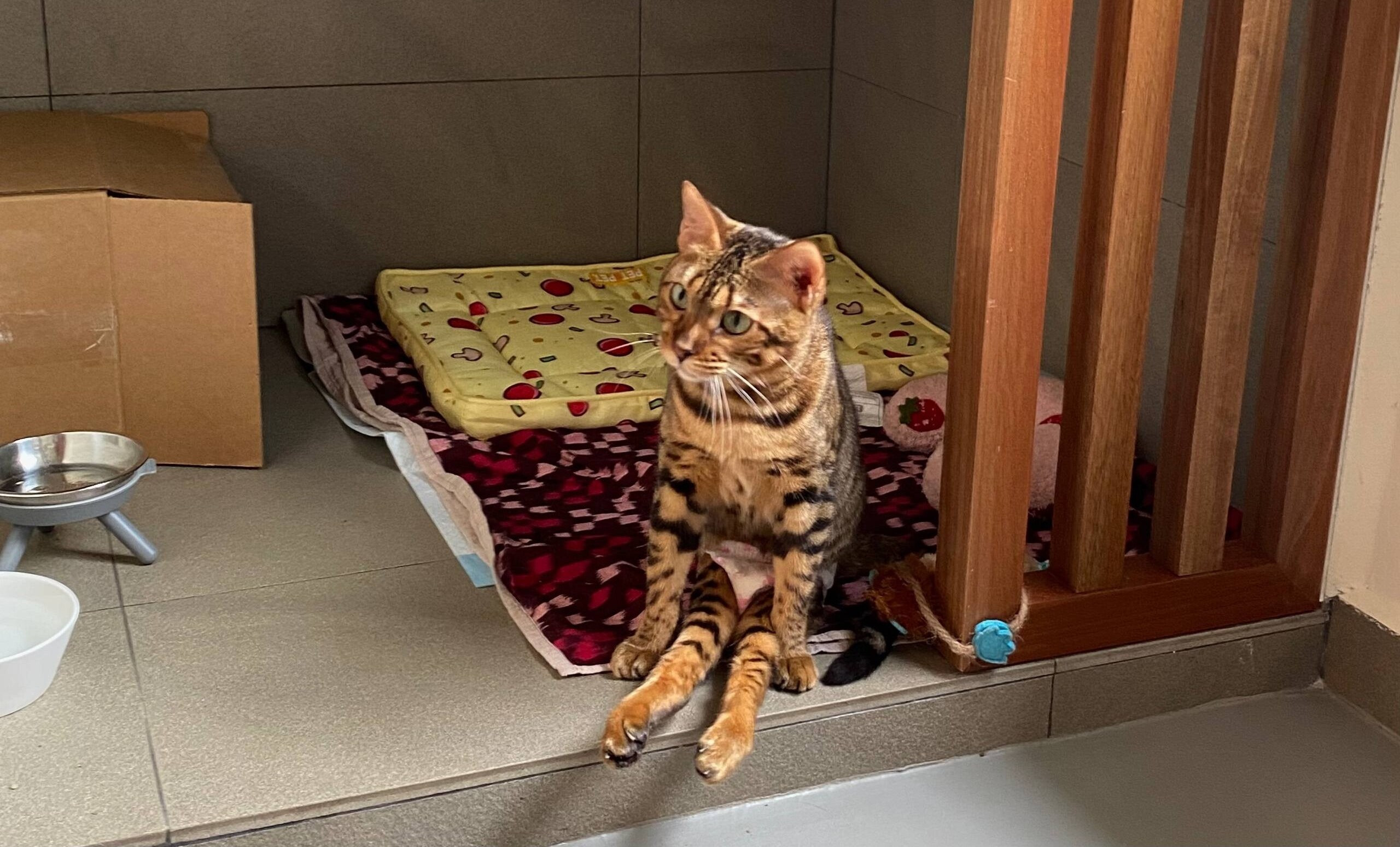
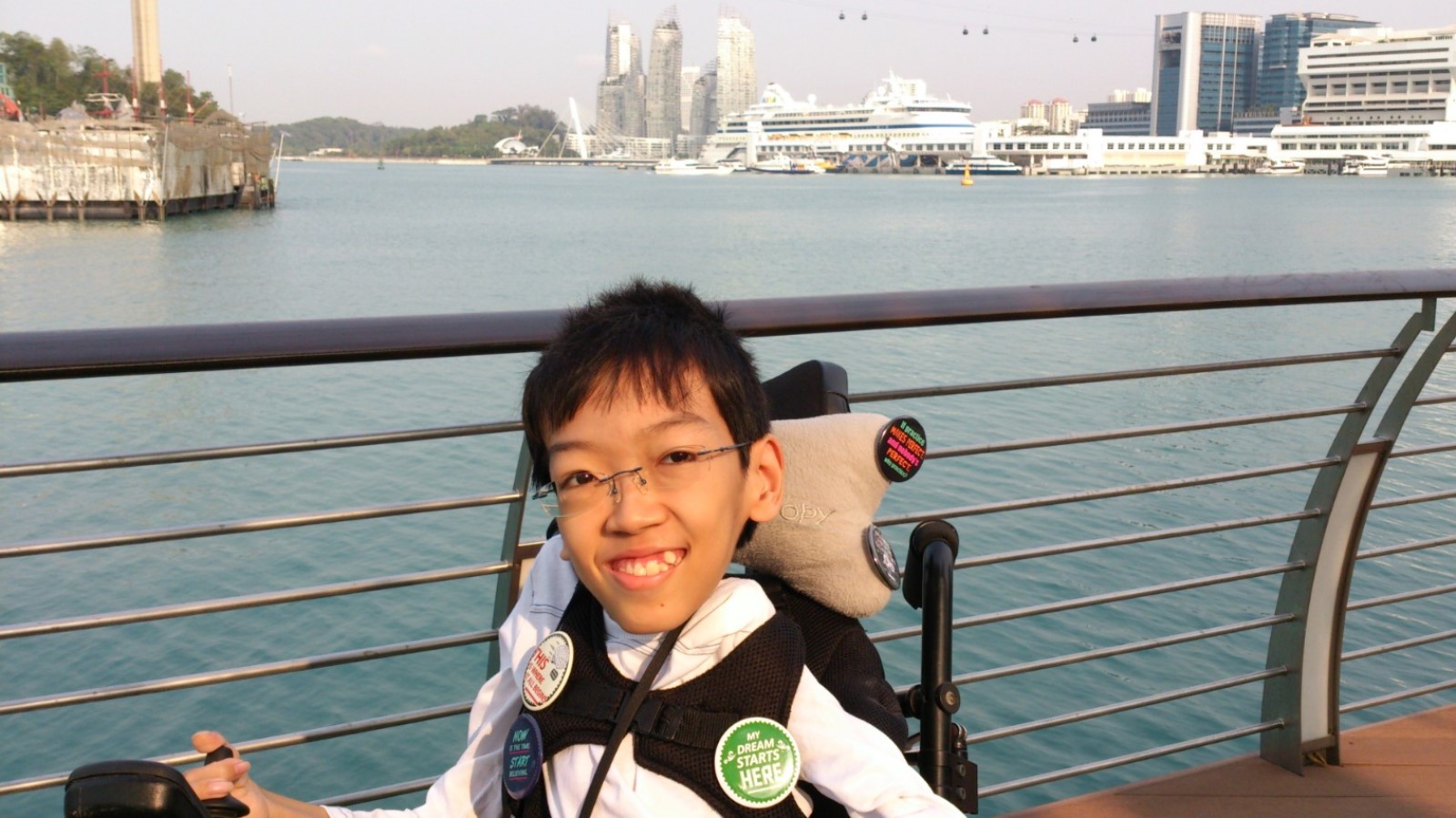

“(Previously) The tours were all conducted in-person, which were very free flowing and conversational,” says Kah Yong. “Now, they have to learn how to start up the computer, launch Zoom, set up their microphone, configure accessibility settings, and position themselves in front of the camera.”
Online programmes usually require a structure, and the guides have to memorise what to do and what to say, and actively keep track of time — all without the help of a checklist. The number of new skills to learn was overwhelming at first, but Kah Yong was patient.
“Sometimes, they still come to me when they forget the keystrokes for certain features,” he says. In general, the blind guides rely on keyboard shortcuts to use the computer.
“If you are familiar with the keyboard, you don’t have to use your eyes at all,” says Kah Yong, “All these shortcuts are available for us, so we just have to remember them.”
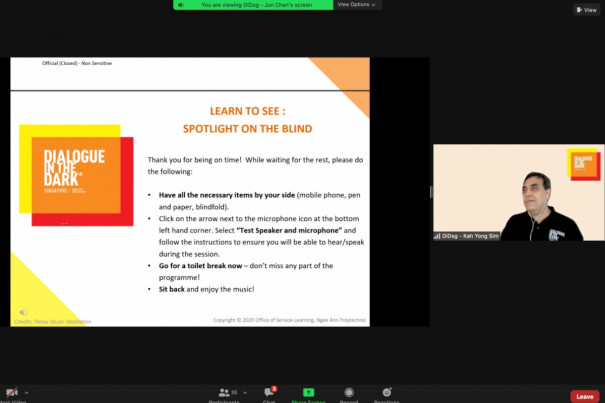
However, Zoom updates sometimes break accessibility features, so Kah Yong has to test the platform frequently before starting a new session. “There was one update where the built-in screen reader did not read out the pop-up for closing breakout rooms, so I actually had to email Microsoft to fix the bug,” he shares.
Learning the ropes of Zoom took him a few weeks; once Kah Yong had the keystrokes and tips down, he made notes for the others.
As a blind person, Kah Yong himself is no stranger to tackling the unfamiliar. “We must be resourceful and ever ready to learn,” he says, drawing examples from his personal story.
Never miss an opportunity to learn
“I was born with glaucoma, but I didn’t register that I had poor vision,” Kah Yong says. “I was very daring, playing with the neighbourhood kids… whatever they did, I followed. Of course I ran into a lot of accidents!”
Glaucoma is an eye condition that damages optic nerves due to the pressure caused by excessive liquid in the eyes. Its symptoms are gradual, and most patients will not notice any vision loss at early stages.
“When I got older, I started to wonder why people could do certain things that I couldn’t do,” says Kah Yong. “I tried to hide my disability in school, because I was concerned how others viewed me. I think my teenage years were the worst.”
He entered Primary 1 at 11 years old, and went through Orientation & Mobility training at SAVH at 15. Despite his deteriorating vision, he went on to pursue a degree in English & Sociology at NUS, and a postgraduate diploma in social work. Now, he is married with two adult sons who are both currently working.
“It’s through tough training that I managed,” he says, recounting how he learned to live without proper sight.
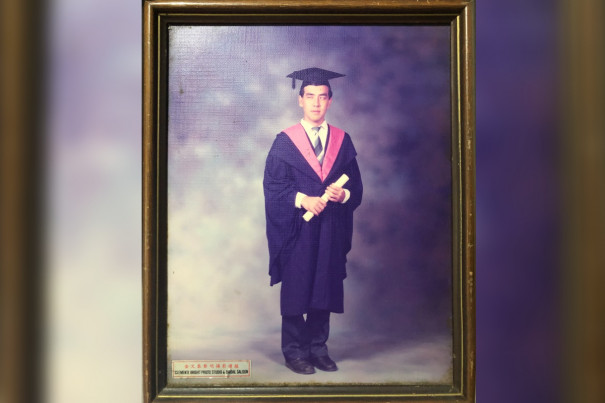
What spurred Kah Yong on was the kindness he received during his years of education. “I was in university in the 80s, when screen readers were not out yet, so I needed human readers for everything,” he recalls. “I advertised in the local papers for readers, but a nurse responded and said she would read my letters to me without payment.”
Kah Yong also recalls a tutor who would voluntarily record herself reading lesson material on audio cassettes for him, which he took home to listen to. “She didn’t teach me directly, but she would read very late into the night… I could hear the crickets in the recording, and sometimes she’ll yawn halfway through!” he says with a laugh.
“It’s people like them who encouraged me to go on,” Kah Yong adds.
After graduating in 1990, he started a postgraduate diploma in 2009, when he learnt to use the computer. “I would email publishers proof that I bought their textbooks, and they would send me a soft copy so my screen reader could read it,” he recalls.
Now, he reads books with a braille machine and writes with screen reader software reading back to him; but despite the technology available, barriers still exist for persons with disabilities.
Empathy is the root of inclusivity
Even with technological advances and a focus on inclusive product design, Singapore must keep an inclusive society as one of its top priorities.
Kah Yong points out that not many can afford assistive devices. “The braille machine has always been very expensive. I only got it recently because the prices went down,” he says. “Many things for the blind are very expensive.”
For example, colorimeters, a device that scans and reads out the colour of an object can cost over $100. Electronic glasses to detect hanging obstacles such as low tree branches, can easily cost up to US$10,000. Guide dogs are a big financial and physical responsibility.
“So we have to be resourceful and use whatever we have in our environment,” says Kah Yong. The blind heavily rely on sound, touch, and some assistance from people to get around and outside the home.
While free apps like Seeing AI can help the blind live better, human kindness and interaction are what makes life fulfilling.
“We all need some way to express ourselves, either through writing, music, or simply talking,” says Kah Yong. “Conversations with a human touch are the best.”
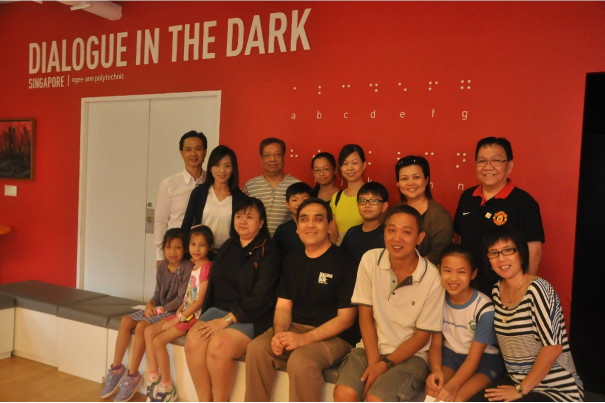
The Zoom sessions means that DiDSG still can run Spotlight on the Blind, but Kah Yong says he misses guiding families through the physical exhibition.
“Those were the days,” he recalls. He would give them co-op challenges, which nudges even uncommunicative families to start a conversation.
“There is no other way to communicate because they’re in complete darkness. Parents and children can’t read each other’s facial expressions, so they open up and learn more about each other,” he explains.
When the situation allows, DiDSG may look into running physical-virtual hybrid sessions for Spotlight on the Blind. But for now, Kah Yong shares that it is important to not lose life’s human touch to the pandemic, especially for the newly blind.
“Find something you like to do, or call someone. The worst thing to do is to stay home with no one to talk to. There’s your phone, and a lot of helplines too. You are not alone,” he says.
If you like what you read, follow us on Twitter and Google News to get the latest updates.
